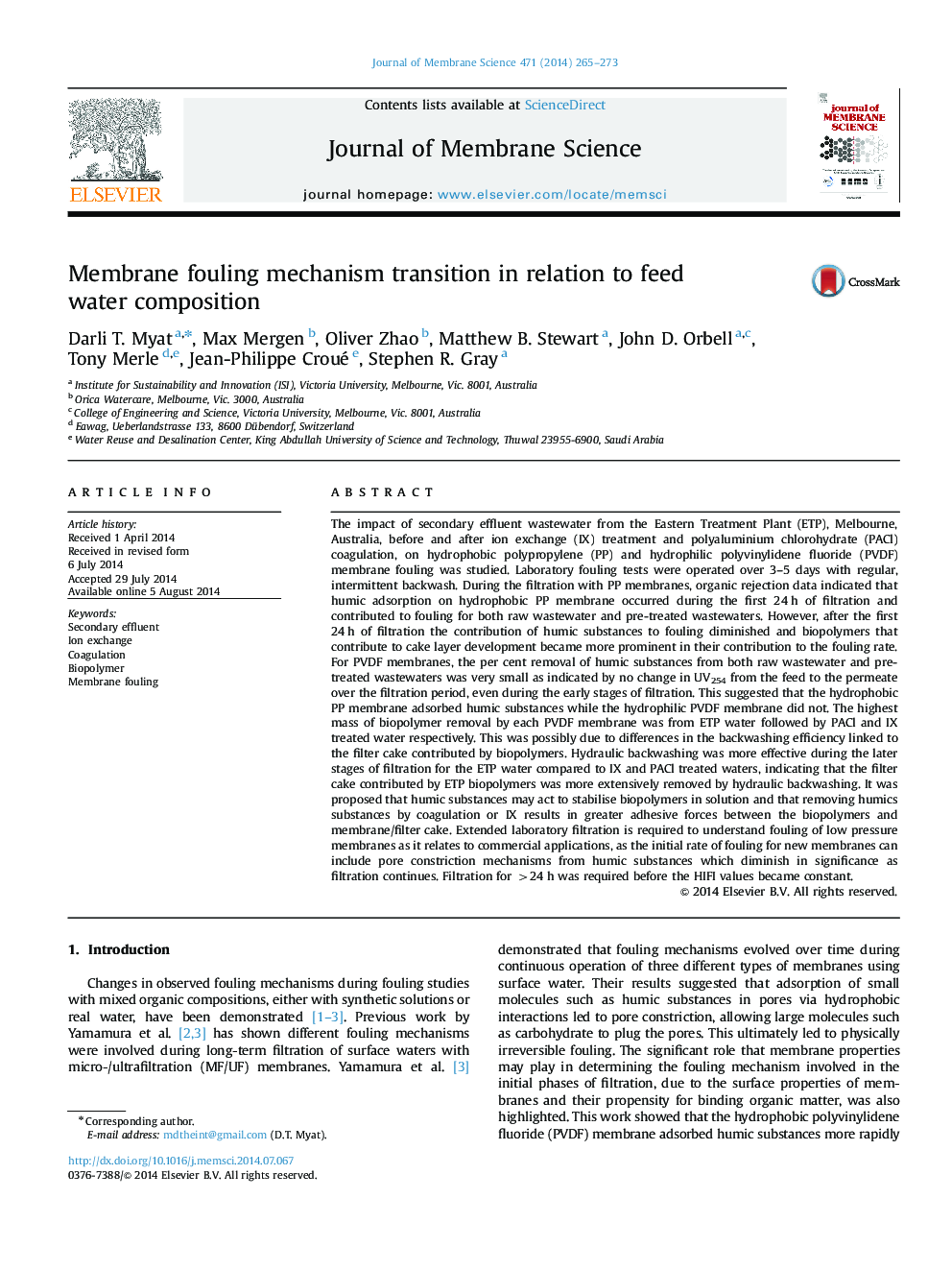| Article ID | Journal | Published Year | Pages | File Type |
|---|---|---|---|---|
| 7021968 | Journal of Membrane Science | 2014 | 9 Pages |
Abstract
The impact of secondary effluent wastewater from the Eastern Treatment Plant (ETP), Melbourne, Australia, before and after ion exchange (IX) treatment and polyaluminium chlorohydrate (PACl) coagulation, on hydrophobic polypropylene (PP) and hydrophilic polyvinylidene fluoride (PVDF) membrane fouling was studied. Laboratory fouling tests were operated over 3-5 days with regular, intermittent backwash. During the filtration with PP membranes, organic rejection data indicated that humic adsorption on hydrophobic PP membrane occurred during the first 24Â h of filtration and contributed to fouling for both raw wastewater and pre-treated wastewaters. However, after the first 24Â h of filtration the contribution of humic substances to fouling diminished and biopolymers that contribute to cake layer development became more prominent in their contribution to the fouling rate. For PVDF membranes, the per cent removal of humic substances from both raw wastewater and pre-treated wastewaters was very small as indicated by no change in UV254 from the feed to the permeate over the filtration period, even during the early stages of filtration. This suggested that the hydrophobic PP membrane adsorbed humic substances while the hydrophilic PVDF membrane did not. The highest mass of biopolymer removal by each PVDF membrane was from ETP water followed by PACl and IX treated water respectively. This was possibly due to differences in the backwashing efficiency linked to the filter cake contributed by biopolymers. Hydraulic backwashing was more effective during the later stages of filtration for the ETP water compared to IX and PACl treated waters, indicating that the filter cake contributed by ETP biopolymers was more extensively removed by hydraulic backwashing. It was proposed that humic substances may act to stabilise biopolymers in solution and that removing humics substances by coagulation or IX results in greater adhesive forces between the biopolymers and membrane/filter cake. Extended laboratory filtration is required to understand fouling of low pressure membranes as it relates to commercial applications, as the initial rate of fouling for new membranes can include pore constriction mechanisms from humic substances which diminish in significance as filtration continues. Filtration for >24Â h was required before the HIFI values became constant.
Related Topics
Physical Sciences and Engineering
Chemical Engineering
Filtration and Separation
Authors
Darli T. Myat, Max Mergen, Oliver Zhao, Matthew B. Stewart, John D. Orbell, Tony Merle, Jean-Philippe Croué, Stephen R. Gray,
